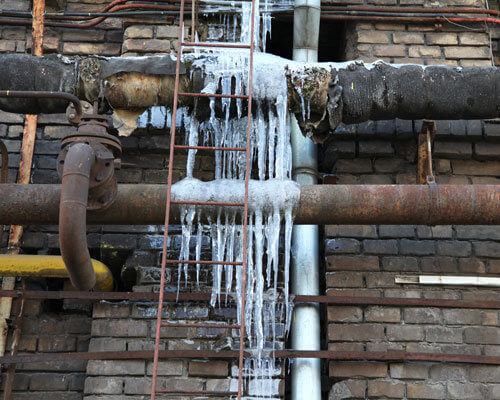Just how do you really feel when it comes to Prevent Frozen Pipes ?

Winter can wreak havoc on your plumbing, especially by freezing pipelines. Here's just how to avoid it from taking place and what to do if it does.
Intro
As temperatures drop, the risk of frozen pipes boosts, possibly bring about costly repairs and water damage. Comprehending how to stop frozen pipelines is crucial for home owners in cold environments.
Avoidance Tips
Shielding vulnerable pipes
Cover pipes in insulation sleeves or utilize warm tape to shield them from freezing temperatures. Focus on pipelines in unheated or external areas of the home.
Home heating methods
Keep indoor rooms appropriately heated, specifically areas with pipes. Open up cupboard doors to permit cozy air to distribute around pipelines under sinks.
Just how to recognize icy pipes
Look for lowered water flow from faucets, unusual odors or noises from pipelines, and noticeable frost on revealed pipelines.
Long-Term Solutions
Architectural modifications
Think about rerouting pipes far from outside wall surfaces or unheated areas. Add additional insulation to attic rooms, cellars, and crawl spaces.
Updating insulation
Invest in premium insulation for pipes, attics, and wall surfaces. Proper insulation assists maintain constant temperatures and reduces the threat of icy pipes.
Shielding Outside Pipes
Garden pipes and outdoor faucets
Separate and drain pipes yard hoses prior to wintertime. Mount frost-proof spigots or cover exterior faucets with protected caps.
Understanding Frozen Pipes
What triggers pipelines to ice up?
Pipelines freeze when revealed to temperatures below 32 ° F (0 ° C) for extended periods. As water inside the pipes freezes, it expands, putting pressure on the pipe walls and potentially triggering them to rupture.
Risks and damages
Frozen pipes can lead to supply of water disruptions, building damages, and costly fixings. Burst pipelines can flood homes and cause extensive architectural damage.
Signs of Frozen Piping
Recognizing frozen pipes early can prevent them from bursting.
What to Do If Your Pipelines Freeze
Immediate actions to take
If you suspect frozen pipelines, keep taps open to relieve pressure as the ice thaws. Utilize a hairdryer or towels taken in hot water to thaw pipelines gradually.
Conclusion
Protecting against frozen pipes calls for positive procedures and fast reactions. By understanding the causes, signs, and safety nets, house owners can shield their plumbing throughout cold weather.
5 Ways to Prevent Frozen Pipes
Drain Outdoor Faucets and Disconnect Hoses
First, close the shut-off valve that controls the flow of water in the pipe to your outdoor faucet. Then, head outside to disconnect and drain your hose and open the outdoor faucet to allow the water to completely drain out of the line. Turn off the faucet when done. Finally, head back to the shut-off valve and drain the remaining water inside the pipe into a bucket or container. Additionally, if you have a home irrigation system, you should consider hiring an expert to clear the system of water each year.
Insulate Pipes
One of the best and most cost-effective methods for preventing frozen water pipes is to wrap your pipes with insulation. This is especially important for areas in your home that aren’t exposed to heat, such as an attic. We suggest using foam sleeves, which can typically be found at your local hardware store.
Keep Heat Running at 65
Your pipes are located inside your walls, and the temperature there is much colder than the rest of the house. To prevent your pipes from freezing, The Insurance Information Institute suggests that you keep your home heated to at least 65 degrees, even when traveling. You may want to invest in smart devices that can keep an eye on the temperature in your home while you’re away.
Leave Water Dripping
Moving water — even a small trickle — can prevent ice from forming inside your pipes. When freezing temps are imminent, start a drip of water from all faucets that serve exposed pipes. Leaving a few faucets running will also help relieve pressure inside the pipes and help prevent a rupture if the water inside freezes.
Open Cupboard Doors
Warm your kitchen and bathroom pipes by opening cupboards and vanities. You should also leave your interior doors ajar to help warm air circulate evenly throughout your home.

Do you enjoy reading about Prevent Frozen Pipes ? Make feedback down below. We will be happy to find out your feelings about this piece. We hope that you visit us again before long. Those who enjoyed reading our post kindly be sure to pass it around. Thanks a lot for going through it.
Recurring Service Plans